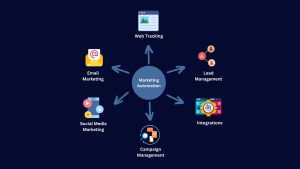Data is the foundation for making informed, strategic decisions that drive success. For small businesses especially, leveraging data can be the difference between stagnation and growth. But one question often arises: how much data do you need to be truly data-driven?
The answer isn’t as straightforward as one might expect. It’s not just about accumulating vast amounts of data; it’s about collecting the right data and using it effectively.
Quality Over Quantity: The Right Data Matters
Imagine having access to a terabyte of data, but it’s all irrelevant or poorly structured. More data isn’t beneficial if it doesn’t answer the right questions. High-quality data, on the other hand, is accurate, up-to-date, and relevant.
This type of data can help you understand your customers, forecast trends, and optimize your marketing strategies.
For instance, a plumbing business might collect data on customer behaviors on its website, preferences, and feedback. Instead of focusing on the sheer volume, focus on key metrics like customer lifetime value, conversion rates,conversion paths, and engagement levels.
These insights are far more actionable than an overwhelming amount of unrelated data points.
Relevance: Tailoring Data to Business Goals
Every business has unique objectives and challenges. Therefore, the data you collect should align with your specific goals. Start by identifying the questions you need to answer to drive your strategy. For a skincare e-commerce business, this might include:
- Who is our target audience?
- What channels drive the most traffic and conversions?
- How do our campaigns impact brand awareness and customer loyalty?
Collecting data that directly relates to these questions ensures that every piece of information you gather is purposeful. This focused approach enables you to derive actionable insights that can guide your decisions and improve your marketing efforts.
Strategic Application: Turning Data into Action
Having the right data is only half the battle. The real power lies in how you use it. Data-driven decision-making involves analyzing data to identify patterns, trends, and opportunities. This means using data analytics tools like Google Analytics to track campaign performance, understand customer behavior, and optimize marketing strategies in real-time.
Consider the case of a recent sales promotion you did. By leveraging data analytics, you could identify which ad creatives are performing best, what times of day yield the highest engagement, and which customer segments are most responsive. This level of insight allows you to tweak campaigns on the fly, ensuring maximum ROI.
The Role of Technology in Data-Driven Marketing
Modern marketing teams have a plethora of tools at their disposal to collect, analyze, and interpret data. From Google Analytics and social media insights to advanced CRM systems and AI-powered analytics platforms, these technologies make it easier to harness the power of data.
For example, machine learning algorithms can analyze customer data to predict future behaviors, helping you tailor personalized marketing strategies. Automation tools can handle data collection and initial analysis, freeing up your team to focus on strategic initiatives.
Overcoming Data Overload: Streamlining Your Approach
Data can explode and get pretty expensive to store pretty quickly. It’s easy to fall into the trap of collecting as much data as possible, but this can lead to data overload. Instead, streamline your approach:
- Define Clear Objectives: Know what you want to achieve with your data. This will guide your data collection efforts and ensure you focus on what matters.
- Use the Right Tools: Invest in analytics tools that suit your needs and can handle the type of data you’re collecting.
- Regularly Review and Clean Your Data: Ensure your data remains accurate and relevant. Remove outdated or irrelevant data to maintain a clear and actionable dataset.
- Train Your Team: Ensure your team knows how to interpret and act on data insights. Provide regular training on the tools and techniques necessary for effective data-driven decision-making.
Conclusion: The Power of Being Data-Driven
Being data-driven is not about how much data you have; it’s about how well you can use the data to make informed decisions. For your small business, this means focusing on high-quality, relevant data that aligns with your goals and leveraging advanced analytics to turn insights into action.
At Ellipssis, we specialise in helping businesses harness the power of data. Our expert team and state-of-the-art tools ensure you get the insights you need to drive your strategy forward. Don’t get lost in the sea of data—partner with us to navigate it effectively and achieve your marketing goals.
Ready to become truly data-driven? Contact us today to learn how we can help you collect, analyze, and act on the data that matters most.



